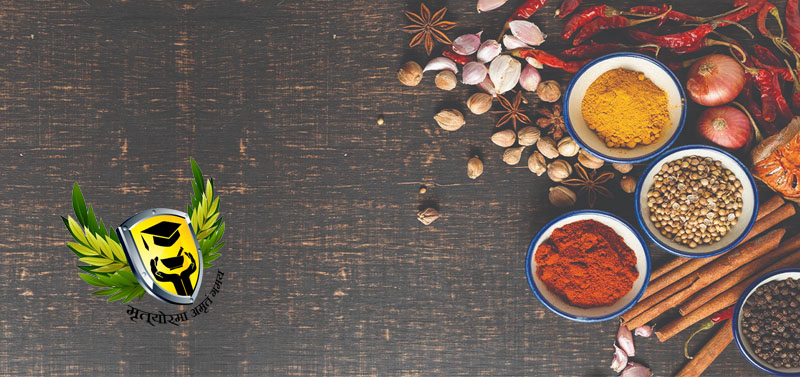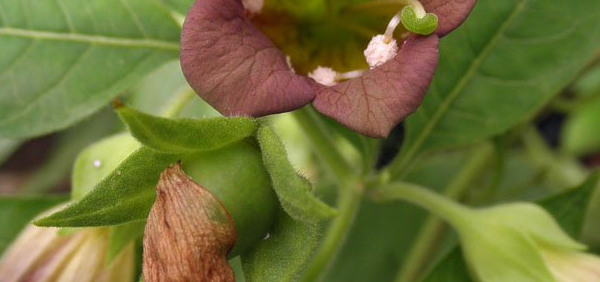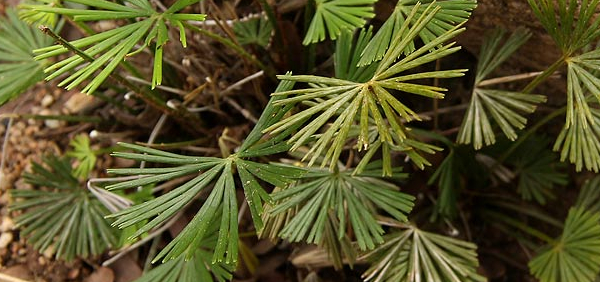jiraka :
 Svetajiraka consists of ripe fruits of Cuminum cyminum, Linn. (Fam.Umbelliferae), a glabrous, annual herb, 30-90 cm hight, flowers very small, white, about 38 mm long stalk in compound umbels, mostly cultivated in plains, plants pulled out, dried thrashed for collecting mature fruits.
Svetajiraka consists of ripe fruits of Cuminum cyminum, Linn. (Fam.Umbelliferae), a glabrous, annual herb, 30-90 cm hight, flowers very small, white, about 38 mm long stalk in compound umbels, mostly cultivated in plains, plants pulled out, dried thrashed for collecting mature fruits.HISTORICAL AND MYTHOLOGICAL REVIEW:
Taxonomical Classification
Kingdom: Plantae - Plants
Subkingdom: Streptophyta
Superdivision: Spermatophyta - Seed plants
Division: Magnoliophyta - Flowering plants
Class: Magnoliopsida - Dicotyledons
Family: Umbelliferae
Genus: Cuminum
Species: Cuminum cyminum
Allied species:
-Cumin (Cuminum cyminum L.) is a diploid species with 14 chromosomes (i.e. 2n = 14).VERNACULAR NAMES
Sanskrit: jirak, jaran, dirghajirak, ajaji, kanavha, kanajirna, dipya, sitajaji, shuklajaji, dirghakEnglish: cumin , Cumin seed.
Hindi: Safed jeera, jeera
Urdu: Zirah, Zirasafed
Telugu: Jeelakari , Jilakarra, Tella Jilakarra
Bengali: Jeera , Jira, Sadajira
Marathi: Jire , Pandhare jire
Konkani: jeera
Oriya: Dhalajeera, Dalajira, Jira
Gujarathi: Jeeru Jirautmi, Jirn, Jiraugi, Jeeru, Jirun
Tamil: Cheerakam , Sheeragam, Chirakam, Jeerakam
Malayalam: Jeerekam
Kannada: Jeerige , Jirage, Bilejirege
Punjabi: Safed Jira, Chitta Jira
Arabic: kammun, avyaja
Spanish: Comino
Assamese: Jira
Japanese: -Hime unikyoo, Kumin
Chinese: -Ou shi luo, Ma qin (Ma chin), Xian hao, Xiang han qin, Zi ran
French: Cumin, Cumin de Malte, Cumin blanc, Cumin du Maroc, Faux anis;
German: -Kreuzkümmel, Römischer Kümmel, Weißer Kreuzkümmel;
Persian: Zireh-Sabz or Cravieh
Sinhalese: Cheeregum, jeera, su(du)duru
Greek: - Kimino, Kiminon;
Varities:
According to sushrutha : shukla & Peeta
According to Dhanvantari nighantu : Jiraka ( Ajaji), Shukla jiraka, Krishna jiraka, Vanya jirah
According to Shodala nighantu : Upakunchika, Shukla jiraka, Krishna jiraka
According to Kaiyadeva nighantu : Shukla jiraka, Krishna jiraka, Kaali kaakaa
According to madanapala nighantu : Shwetha, Upakunchika, Shyaama
Definition
Synonyms
Synonyms in Ayurveda: jirak, jaran, dirghajirak, ajaji, kanavha, kanajirna, dipya, sitajaji, shuklajaji, dirghakJiraka – that which helps in digestion.
Ajaji – its nature is to improve the appetite.
Jarana – provides good digestion.
Kana – it has many minute parts.
Peethabam – fruits are yellowish.
Ruchya – improves taste in the mouth.
Medhyam – good tonic for brain.
Dipyaka – the fruits are longish shape.
Rasa: Katu
Guna: Laghu Ruksha
Veerya: Ushna
Vipaka: Katu
Karma: Kaphahara Vatahara Vedanasthapaka
Āyurveda and Siddha regard jeeraka as having a bitter taste with a hot property, capable of removing vāta and kapha doṣas but causing pitta. It is dry, astringent, appetising, digestive, strengthening, light for digestion, good for the eyes and an aphrodisiac. It is used in the treatment of indigestion, dysentery, enlarged spleen, flatulence and vomiting.
Cultivation:
Cultivation of cumin requires a long, hot summer of three to four months, with daytime temperatures around 30°C (86°F); it is drought tolerant, and is mostly grown in Mediterranean climates. It is grown from seed sown in spring, and needs a fertile, well-drained soil.Propogation:
It is grown from seed sown in spring and needs a fertile, well drained soil.Harvesting:
A sandy soil is best, when the seedlings have hardened, transparent carefully to a sunny aspect, planting out 15 cm apart seed regularly.Phytochemistry:
- SEED : Cuminin
- Diacyl glycerol
- Imperatorin
- Isoimperatorin
- Isoimpinellin
- Oxypeucedanin
- Apigenin
- Apiin
- Oxalic
- Cuminaldihyde
- P – cymene
- FRUIT : Fatty oil
- Resin
- Mucilage
- Protein compounds
PHARMACOLOGY:
IMPORTANT FORMULATIONS6. Jirakadya churna
Parts used for medicinal purpose
Fruit, Seed, ,Dosage:
seed powder- 3-6 gmAntidote:
One of the antidotes for excessive cumin is nutmeg. It is particularly effective at distracting from the flavor. Of course, nutmeg may not be a good complement to all dishes. Another way to accomplish the same thing is to use cinnamon, which works particularly well in chili. Cinnamon adds a sweetness that distracts from cumin’s bitterness.Substitute:
carawayAdultrants:
Commercial value:
Cumin is well known as an
ingredient of curry powder, and also is a critical ingredient of chili powder.
It is found in achiote blends, adobos, sofrito, garam masala, and bahaarat.
Cumin can be found in some Dutch cheeses like Leyden cheese, and in some
traditional breads from France. It is also commonly used in traditional
Brazilian cuisine. Cumin is one of the ingredients in the spice mix berbere.
Morphology:
Fruit, a cremocarp, often separated
into mericarps, brown with light coloured ridges ellipsoidal, elongated,
about 4-6 mm long, 2 mm wide,
tapering at ends and slightly compressed laterally,
mericarps with 5 longitudinal hairy
primary ridges from base to apex, alternating with secondary ridges which are flatter and bear
conspicuous emergences,
seeds orthospermous, odour
umbelliferous characteristic, taste, richly spicy.
Histology:
Transverse section of fruit shows
epidermis consisting of
·
short polygonal, tabular cells densely covered
with short, bristle hairs on ridges,
·
mesocarp with few layers of parenchyma and five
vascular bundles under five primary ridges, six vittae under secondary ridges,
four on dorsal and two on commissural surface,
·
endocarp consists of polygonal cells containing
fixed oil and aleurone grains carpophore consists of slender fibres.
Geographical distribution:
Cumin is native to the Mediterranean region. It was originally cultivated in Iran and the Mediterranean region. In India it is cultivated in Punjab and Uttar Pradesh.ECOLOGICAL ASPECT:
-Cumin seed quality is significantly influenced by agro ecological conditions of growing areas. Relative presence of terpinene or aldehyde in cumin essential oil greatly influenced by environmental stresses.Plant conservation:
Exact status definitions can vary from state to state.General Use:
- It helps in enhancing appetite and helps in digestion.
- It is very useful in vomiting and nausea.
- It is also useful in treatment of piles, leucorrhea, and skin diseases.
- It also acts as natural aphrodisiac that increases the libido and sperm count in males.
- It is very good for eyes.
- it is very useful in the treatment of fever (Jirna Jawar or Chronic Fever)
- It gives Stamina and strength.
- It also promotes lactation in mothers.
- It is also good for heart and prevents heart related diseases.
- It is very much useful in diarrhea, bloating, flatulence.
- It is helpful in diabetes also.
- It plays a good role in improving immunological strength.
- It stimulates the taste buds and promotes salivary secretion.
- It is a very good natural antioxidant.
- It is useful in the treatment of respiratory diseases like tuberculosis.
- It reduces the cholesterol level and helps in weight loss.
Therapeutic Uses:
ruchya, kturasyukt, agnideepak, deepan, javarnashak, pachak, vrushya, balkarak, pittkark, kaphnashak, Garbhashaya Vishuddhikrut, Chakshushya, Grahi, Sangrahi. Jeerak is pungent in taste and hot in nature. It is Kaphavatahara in nature that helps to balance the kapha and vata doshas.Systemic Use:
Administration:
seeds, powderPharmacological:
AgnimandhyaClinical trials:
- Effect of the cumin cyminum L. Intake on Weight Loss, Metabolic Profiles and Biomarkers of Oxidative Stress in Overweight Subjects: A Randomized Double-Blind Placebo-Controlled Clinical Trial
- The pharmacological activities of Cuminum cyminum - A review Prof Dr Ali Esmail Al-Snafi
Research:
Alcoholic extract of seeds at 150 mg/kg showed 100% anti-fertility effect in early pregnancy in female rats.
- (Ind. J. Med. Res 1976, 64, 1133)
Seeds significantly decreased incidence of both bengo (a) pyrene – induced neoplasia in swiss mice and hepatomas in wistar rats.
- (Food chem. Toxicol. 1992, 30,953)
Precautions:
Toxicity studies:
Cumin is LIKELY SAFE when taken by mouth in food amounts and POSSIBLY SAFE when taken by mouth in appropriate medicinal amounts. The side effects of cumin are not known.Use in other system of medicine:
CONCLUSION:
Ayurvedic Formulations:
Common Ayurvedic Formulations of jiraka with their IndicationsVilwadi Lehyam
Ashwagandhadi Lehyam
KEY WORDS: jiraka , Cuminum cyminum Linn. , sveta jiraka
- » Classification and names of jiraka
- » Synonyms and definitions of jiraka
- » Drug Properties of jiraka
- » Chemical Constituents of jiraka
- » Standardization of jiraka
- » Parts used and Dosage of jiraka
- » Morphology and Histology of jiraka
- » Distribution and Conservation of jiraka
- » Cultivation of jiraka
- » jiraka in the market
- » Medicinal Uses of jiraka
- » Researches and clinical trails of jiraka
- » jiraka in other sytems of medicine
- » Ayurvedic formulations with jiraka
- » Images of jiraka













